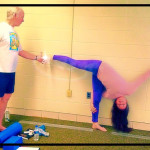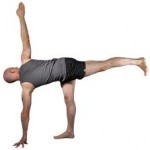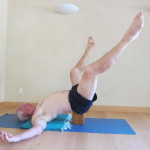Embryology for Yoga Students:
Yoga Room Berkeley, January 14 and 15, 2017
embodying the earliest days of embryological growth and development
as a yoga practice/meditation:
In: Non Dual Wholeness
where in the present moment, the unbounded infinite,
containing all, including past, present, future and parallel layers and levels of reality
we recognize forms emerging as
Yin and Yang as Egg and Sperm
Egg and Sperm merge / two become one…. then
One becomes two …
And two become three
And three become 30 trillion…
Out of the infinite, luminous emptiness of the present moment arises the entire cosmos, in a mind boggling multiplicity of forms. The forms to explore today are the echos of our embryological past, still emerging, available when we can be still and feel our inner depths.
Some general principles for contemplation:
1. Embryology for yogis is an investigation of the emergence and transformation of forms through fluid dynamics.
2. The morphology of the embryo is present in the adult human as possibilities of deeper integration.
3. Structures and cavities appear and disappear through time during development.
4. Growth is movement!
5. Not all cells grow/divide at the same rate. This leads to changes in both shape and function.
6. Cells grow by contact along lines of energy, like ants following a chemical trail.
7. Membranes and fluids are primary.
8. The first major differentiation of cells, known as gastrulation, gives rise to three primary types of tissue. The endodermal cells become the gut body, the mesodermal cells become connective tissue structures including the heart, and the ectodermal cells become the nervous system. Most of our explorations will be here. (See day 12 in the diagram below.)
Week 1: Conception, spherical energy: rolling, falling, tumbling, dividing, condensing, hatching, hollowing, fluidity, freedom.
Practice: Being Yin/Egg: Standing calmly, feel yourself as a sphere with your heart as the center. Feel the round, soft receptivity in all directions. Be patient, waiting, internal, grounded, rooted, still.
Practice: Being Yang/Sperm: Feel one of your arms coming alive like a snake waking up, undulating, pulsating. Add your other arm. Let each leg feel snake like. One at a time give each limb a direction and feel the energy surging out into the world. Feel your spine like a snake, ready to move into action,into the world.
Practice: The emergence of the poles. In any supine position like setu  bandha, let the upper and lower bodies begin to differentiate. The block here acts as a fulcrum, allowing the pelvis/tail/feet move in the opposite direction of the head, shoulders chest. Feel the dynamic tension in the middle realm of the body – liver-stomach-spleen kidneys like the telophase above. Find
bandha, let the upper and lower bodies begin to differentiate. The block here acts as a fulcrum, allowing the pelvis/tail/feet move in the opposite direction of the head, shoulders chest. Feel the dynamic tension in the middle realm of the body – liver-stomach-spleen kidneys like the telophase above. Find  the one-two-three: whole body, dividing into two with the middle opening as three. You may discover your own ‘vesica pisces emerging as the gateway to all possibilities.
the one-two-three: whole body, dividing into two with the middle opening as three. You may discover your own ‘vesica pisces emerging as the gateway to all possibilities.
Practice: Rolling and Pouring, from “How Life Moves”. Lying on your back, quietly feeling your weight, your fluidity. Feel in inner currents and tidal movements even as you lie still. Let those fluid movements invite the body respond in movement, not from the limbs, but from the fluids, like a baby exploring rolling over. Feel and find the omni-directional freedom, felt sense of weight, rotation/spinning in relaxed, supported, quiet environment. This is a very internal, meditative state. Savasana or other restorative poses can take us here as well.
Week 2: Implantation; landing, attaching, making connections, establishing roots.
Practice: Making a connection with floor or wall, feel how a new level of stability allows more types of growth and movement. Attach yourself in one place and allow everywhere else freedom to move. Now we are moving outside ourselves to find support from the world around us. It is a more extroverted state, discovering the ‘other’.
Week 2: Gastrulation: differentiating into front, back and middle; expanding, differential growth. This is a huge shift in perception/awareness as the biological intelligence now differentiates into three modes of being/action/perception.
Practice: Explore each of these three places and modes of being before they complexify and differentiate more completely. This can be done in any pose, as all embryological moments are available at any time, as fields waiting for imagination to re-ignite them. However, new students may want to stay on the floor where you can safely surrender to gravity and feel the awakening of the fluids and membranes. The fluid filled cavities carry nutrients, sound waves, and waves of movement.
Front body as:
Endoderm – yolk sac space- nurturing – gut body, eventually to become upper, middle and lower GI track; Feel the deep support of the yolk sac before it is drawn into the body and elongated. Feel it as expansive, soft, full. Kapha in Ayurveda.
Back body as:
Ectoderm – amnion to become amniotic sac, and primitive nervous system – brain – sense organs – skin; Feel the deep support of the amniotic cavity before in encircles you, before the middle emerges as mesoderm. Feel the wide sensitivity of the future skin/brain/nerves. Vata in Ayurveda.
Middle body as:
Mesoderm: mediator; grows out from middle – all connective tissues, muscles, bones, ligaments, fascia, heart, kidneys and eventually limbs. Pitta in Ayurveda. Find the middle ground as place of balance in all planes and movements.
Week 3: Yolk sac drawn into body as amnion grows around to complete sphere. Deepening the roots. The three layers begin there next level of differentiation. The ectoderm enlarges to become the neural plate and then the neural crest and neural tube. The neural tube will later become spinal cord and various sections of the brain. Mesoderm shows beginning of head and tail, heart. Bones and muscles will emerge. Endoderm begins lengthen to mouth and anus. Lungs, intestines and bladder will emerge.
Practice: Gut body; Hu breath or Vessel breath to active gut body – hollow tubular fluid consciousness. Wake up the fluids and feel the shifts in pressure as the fluids rebound around inside the membranes containing them.
Practice: Emergence of the Mesoderm: Lying on your back, feel the entire floor as your back body/ectoderm and amnion; the ceiling and space above you as your front body/endoderm/yolk sac. Take this into your cells so that all the cells behind your median plane become the ectoderm and all the cells in front become the endoderm. Now imagine the emerging of a middle layer growing along the interphase between endo and ectoderms. This is the median plane feel it spreading sideways and also lengthening to head and tail. Finally find arm buds, leg buds, head and tail emerging.
Practice: Embryonic Folding Click to see short video)
Coiling and Uncoiling pt 1: (right image) Rolling onto your side, use the mesoderm to begin to ‘coil up’, extending through head and tail, to come into a fetal position Keep the back long and feel the yolk sac being drawn into the body as you curl. Now, again from the mesoderm, begin to uncoil, extending through head and tail as you feel the gut body lengthening, carrying the spinal column into a mild back bend. Slowly and mindfully repeat this coiling and uncoiling. Bonnie Cohen calls this physiological flexion and extension as it is driven by the gut body action.
Coiling and Uncoiling pt 2: (left image) Lying on your back, feel/imagine the back body expanding sideways and wrapping around the center mesodermal channel to close the front, as the ribs emerge from the spine and wrap around to protect the heart and lungs. Feel space and openness along the whole back body. Then, gently reverse the action, softening and opening the front body like the petals of a flower unfolding.
Practice: Bring any of these explorations into any yoga pose or sequence of poses. Find where there deep inner movements and fluid waves can support you so there is less ‘muscling’ and more surrender in the poses.
Practice: Shamanic Journeying and Active Dreaming: With the support of your guides and gatekeepers, imagine that your soul awareness can step outside of time and see the soul energy coming in at conception.






















